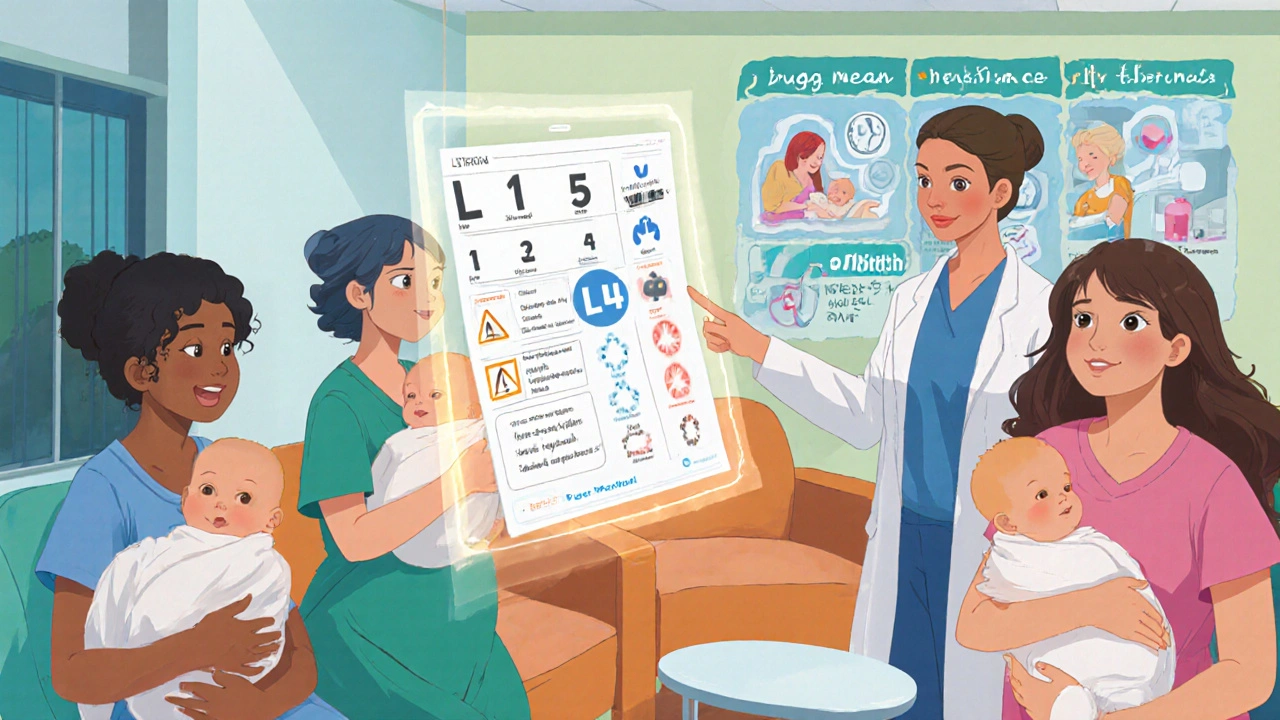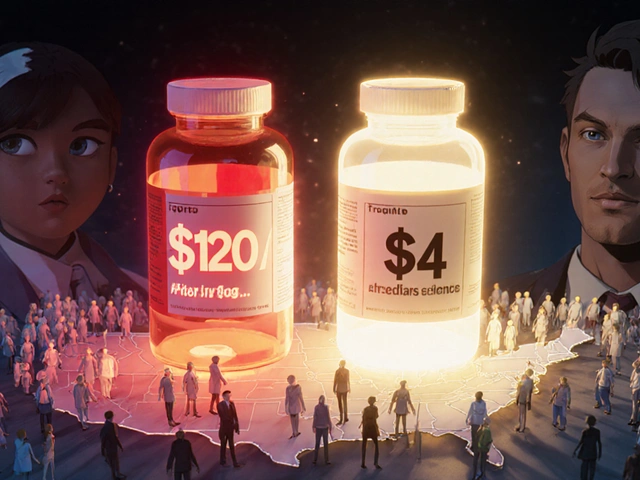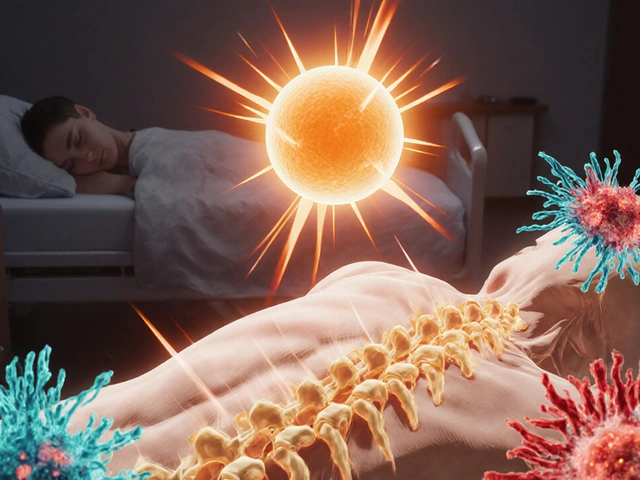Medication Safety Checker for Breastfeeding
Check Medication Safety While Breastfeeding
Enter any medication name to see its safety classification (L1-L5), transfer factors, and timing recommendations.
Medication Safety Results
When you're breastfeeding, every pill, injection, or patch you take doesn't just affect you-it can reach your baby. It’s a reality that worries many new parents. Breastfeeding and medications are often misunderstood, leading to unnecessary fear-or worse, dangerous decisions. The truth? Most medications are safe. But knowing which ones are, and why, takes more than guesswork.
How Medications Actually Get Into Breast Milk
Medications don’t magically appear in breast milk. They travel from your bloodstream, through the cells lining your milk-producing glands, and into the milk. This happens mostly by passive diffusion. Think of it like water seeping through a sponge-drugs move from where there’s more (your blood) to where there’s less (your milk), until levels balance out. Not all drugs make the trip equally. Four key factors determine how much ends up in your milk:- Molecular weight: Drugs under 200 daltons slip through easily. Most common medications fall into this range.
- Lipid solubility: Fatty drugs like some antidepressants and sedatives cross membranes more readily.
- Protein binding: If a drug is tightly bound to proteins in your blood (over 90%), very little is free to enter milk.
- Half-life: Drugs that stick around longer (over 24 hours) have more time to build up in milk.
There’s also something called ion trapping. Breast milk is slightly more acidic than your blood. Weakly basic drugs-like lithium, certain antidepressants, or barbiturates-get trapped in milk and can reach concentrations two to ten times higher than in your blood. That doesn’t mean they’re dangerous, but it’s why timing matters.
Right after birth, your milk is colostrum-thick, sticky, and low in volume. The gaps between your milk-producing cells are wider, so more drugs can pass through. But here’s the good news: your baby only drinks 30-60 mL a day in those first few days. By day five, your milk volume jumps to 500-800 mL, but the cell gaps close. So early exposure is high in concentration but low in total amount.
What’s Safe? The L1-L5 Risk System
Dr. Thomas Hale’s classification system is the gold standard for judging medication safety during breastfeeding. It’s simple:- L1: Safest - No documented risk. Examples: ibuprofen, acetaminophen, penicillin.
- L2: Probably Safe - Limited data, no adverse effects reported. Examples: sertraline, amoxicillin, metformin.
- L3: Moderately Safe - Limited data, possible risk. Use with caution. Examples: fluoxetine, lorazepam, insulin.
- L4: Possibly Hazardous - Evidence of risk, but benefits may outweigh risks. Examples: lithium, cyclosporine.
- L5: Contraindicated - Clear risk. Avoid. Examples: chemotherapy drugs, radioactive iodine, ergotamine.
Here’s the key: L1 and L2 cover over 80% of commonly used medications. The American Academy of Pediatrics says “the vast majority of medications are compatible with breastfeeding.” That’s not a vague reassurance-it’s backed by data from over 4,000 drugs.
Most Common Medications and What We Know
Let’s break down the top three categories women take while breastfeeding, based on data from over 10,000 mothers:Analgesics (Pain Relievers)
28.7% of breastfeeding mothers use painkillers. The safest options? Acetaminophen and ibuprofen. Both have minimal transfer into milk. Studies show infant exposure is less than 1% of the maternal dose. Avoid aspirin and naproxen long-term-naproxen can accumulate, and aspirin carries a rare risk of Reye’s syndrome in infants.
Antibiotics
22.3% of mothers take antibiotics. Penicillins, cephalosporins, and azithromycin are all L1 or L2. Even if your baby gets a little in their milk, their gut is already full of bacteria-so side effects like diarrhea are rare and mild. Avoid tetracycline long-term (it can stain teeth), and monitor for yeast infections in your baby if you’re on broad-spectrum antibiotics.
Psychotropics (Antidepressants, Anti-anxiety)
15.6% of mothers use these. Sertraline is the go-to-it’s L2, transfers minimally, and has been studied in over 1,000 infants. Fluoxetine is L3; it stays in the system longer and can build up. Paroxetine is also safe, but some babies may be sensitive. Lithium is L4-requires close monitoring. Never stop your antidepressant cold turkey. The risk of postpartum depression relapse is far higher than the risk from medication transfer.

When Timing Matters: How to Reduce Infant Exposure
You don’t need to stop breastfeeding to take medication. You just need to be smart about when you take it.- Take single-dose meds right after breastfeeding. That way, your blood levels peak while your baby sleeps.
- If you take meds multiple times a day, time the dose right before the longest stretch of sleep-usually after the nighttime feeding.
- For drugs with short half-lives (like ibuprofen), wait 2-4 hours after taking it before nursing. For long-acting ones, space doses so the lowest concentration coincides with feeding.
There’s no need to pump and dump unless you’re on a truly dangerous drug (L5). Pumping doesn’t speed up clearance-it just removes milk that’s already filled with the drug. Your body clears it from your blood, and milk follows.
Topical and Inhaled Medications: Safer Than You Think
Creams, sprays, and inhalers are often safer than pills. Why? Less of the drug enters your bloodstream. That means less makes it to your milk.Topical steroids, antifungal creams, and even nasal sprays like fluticasone are generally safe. Just avoid applying anything directly to the nipple before feeding-wash it off if you do. Inhalers for asthma? Perfectly safe. Less than 1% of the dose reaches your milk.

What to Watch For in Your Baby
Most babies show no reaction. But if you’re on a new medication, keep an eye out for:- Unusual sleepiness or irritability
- Poor feeding or weight gain
- Diarrhea or rash (especially with antibiotics)
- Jaundice (rare, but possible with certain drugs)
If you notice any of these, contact your pediatrician. But don’t panic. Only 1-2% of infants experience any clinically significant effect. And in most cases, symptoms fade once the drug clears.
Reliable Resources You Can Trust
Don’t rely on Google or well-meaning friends. Use these:- LactMed - Free, online, from the U.S. National Library of Medicine. Covers 4,000+ drugs, 3,500 with infant exposure data. Updated monthly. Used by over 1.2 million people a year.
- Medications and Mothers’ Milk by Dr. Thomas Hale - The go-to printed guide. Uses the L1-L5 system clearly. Best for quick clinical decisions.
- MotherToBaby - Free phone and chat service (1-866-626-6847). Staffed by specialists who answer 15,000 questions a year.
- LactMed On-the-Go - Mobile app version of LactMed. Downloaded 45,000 times as of September 2023.
Many lactation consultants report that nearly 80% of mothers they see were wrongly told to stop breastfeeding because of a medication. That’s not just misinformation-it’s harmful. You deserve accurate, evidence-based advice.
The Bigger Picture: Why This Matters
Breastfeeding reduces infant infections, lowers the risk of sudden infant death syndrome, and supports long-term brain development. For mothers, it lowers risks of breast cancer, ovarian cancer, and type 2 diabetes.When a mother stops breastfeeding because she’s told a medication is unsafe-when it’s not-she loses all that. And so does her baby.
Healthcare providers are starting to catch up. The FDA now encourages drug companies to include breastfeeding women in clinical trials. By 2030, personalized lactation pharmacology may be standard-using genetic testing to predict exactly how much of a drug your body passes into milk.
For now, you have what you need: reliable data, clear guidelines, and a simple rule-if a drug is safe for your baby to take directly, it’s almost always safe through your milk.
Is it safe to take ibuprofen while breastfeeding?
Yes. Ibuprofen is classified as L1-safest for breastfeeding. Less than 0.01% of the maternal dose passes into milk. It’s commonly used in infants for fever and pain, so exposure through breast milk is minimal and safe.
Can antidepressants affect my baby’s development?
Extensive studies show no long-term developmental delays in babies exposed to SSRIs like sertraline or paroxetine through breast milk. In fact, untreated maternal depression poses a greater risk to infant development than medication exposure. Sertraline is preferred because it transfers minimally and has the most safety data.
Should I pump and dump after taking medication?
Almost never. Pumping and dumping doesn’t remove the drug from your system-it just removes milk that’s already filled with it. The drug clears from your blood over time, and milk levels follow. Timing your dose (e.g., right after feeding) is far more effective than discarding milk.
Are herbal supplements safe while breastfeeding?
Not necessarily. Many herbal products aren’t tested for safety in breastfeeding. LactMed now includes over 350 herbs and supplements, but most lack human data. Chamomile and ginger are generally low risk, but others like sage or black cohosh can reduce milk supply. Always check LactMed before using any supplement.
What if I need a medication that’s L4 or L5?
L4 drugs (like lithium) require close monitoring but don’t always mean stopping breastfeeding. Your doctor can adjust the dose, monitor your baby’s blood levels, or switch to a safer alternative. L5 drugs (like chemotherapy) are rare, and alternatives are usually available. In extreme cases, temporary cessation with pumping and storing milk may be an option until treatment ends.
If you’re on a new medication, talk to your doctor or a lactation consultant. Don’t assume the worst. You’re not alone-over half of breastfeeding mothers take medication. And the vast majority continue breastfeeding safely.







Write a comment
Your email address will be restricted to us